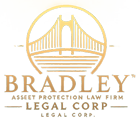When discussing legal asset protection strategies with new clients, one common topic that arises is fraudulent conveyance. This concept is critical in Asset Protection, especially when setting up an offshore asset protection trust or a Bridge Trust. In this article, we will delve into what fraudulent conveyance really means, emphasizing the importance of intent in these transactions.
What is Fraudulent Conveyance?
At its core, fraudulent conveyance revolves around the mindset of the transferor at the time a transfer is made. This concept is intertwined with the impact of that transfer on the ability of existing creditors to collect debts. Essentially, if a transfer is made without the intent to defraud a creditor, and if there is no actual creditor who is hindered or defrauded by the transfer, then fraudulent conveyance does not apply.
Key Elements of Fraudulent Conveyance
Let’s break this down further:
– Intent: If there is no intent to defraud, there can be no fraudulent conveyance. Establishing intent is crucial, as it serves as the foundation for assessing whether a transfer meets the legal definition of fraudulent conveyance.
– Creditor Impact: If a transfer does not affect an actual creditor—meaning no one is delayed, hindered, or defrauded—then fraudulent conveyance is also not established. The absence of creditor impact helps clarify the legitimacy of the transfer.
The analysis of fraudulent conveyance can be complex and often depends on specific circumstances. To illustrate this, we’ll examine several hypothetical scenarios that may arise in the context of legal asset protection.
Hypothetical Scenarios of Fraudulent Conveyance
Example #1: Mr. Jones and His Charitable Donation
Consider Mr. Jones, who has $6 million in assets and $4.5 million in debt, which is common in the real estate sector. Mr. Jones is solvent, meaning his assets exceed his liabilities, and he is up to date on all mortgage payments.
The Donation Commitment
During a fundraiser in January, Mr. Jones commits to donating $100,000 to a charity by year-end. However, by May, an environmental issue significantly reduces the value of his primary property, dropping his total assets to $4 million, while his liabilities remain at $4.5 million.
The Question:
Can Mr. Jones still fulfill his charitable donation, or would he be committing fraudulent conveyance by doing so?
The Answer:
In this scenario, Mr. Jones can proceed with the donation without facing fraudulent conveyance. At the time he made the commitment, he had no intent to defraud creditors. Even after becoming technically insolvent, his initial intent behind the donation remains unchanged, especially as he stays current on his mortgage obligations.
Fact Change: Market Conditions Impacting Mr. Jones
Now let’s change the facts slightly. Suppose there’s a sharp downturn not just in one property but across Mr. Jones’s entire portfolio. It becomes likely that he may have to walk away from many of his assets.
Can he still complete the $100,000 gift? Again, YES—as long as his mindset when the donation was committed was not about avoiding a debt. However, if he intends to increase the gift to $1 million, the answer would likely change.
Answer on Increased Gift:
The likely answer would be NO, as the motivation behind increasing the gift may be to shield assets from creditors. This would demonstrate a clear intent to hinder creditor access, leading to a determination of fraudulent conveyance.
Remedy for Mr. Jones
With the revised facts, the court might simply require Mr. Jones to reverse the $1 million gift. He would not face criminal liability or fraud charges but would need to bring back the transfer.
Example #2: Dr. Smith’s Asset Protection Plan
Let’s explore another scenario involving Dr. Smith. He has $3 million in assets, including a home and an office building but also faces a malpractice lawsuit.
The Malpractice Claim
Dr. Smith carries a $1 million malpractice insurance policy and is being sued for nerve damage during a procedure. His insurance carrier is actively defending him, but the trial won’t occur for another year.
The Question:
Is it too late to establish an Asset Protection Plan?
The Answer:
In Dr. Smith’s situation, the planning ability hinges on the likelihood of insurance coverage. If nerve damage claims typically settle for $250,000 to $1 million, he can proceed with asset protection without restrictions.
However, if anticipated settlements fall between $1 million and $5 million, establishing an asset protection plan becomes more challenging but remains viable.
Potential Planning Options:
1. Partial Asset Retention: Retain sufficient assets outside of the plan to cover expected claims.
2. Comprehensive Asset Protection with Exemption: This method allows Dr. Smith to put all available assets into planning while exempting the ongoing lawsuit, effectively avoiding fraudulent conveyance.
Example #3: Mr. Green’s Asset Protection and Divorce Considerations
Now, consider Mr. Green, a businessman with $9 million in assets. He is married and wishes to set up an Asset Protection Plan. However, understanding how this planning intersects with potential marital issues is crucial.
The Marital Situation
Mr. Green has been married for 25 years and built his wealth from humble beginnings. The family home is valued at $1.3 million, with a $500,000 IRA set up for his wife.
The Question:
Can you continue with setting up an Asset Protection Plan for just him?
The Answer:
This scenario requires careful consideration. While it may seem appropriate to set up asset protection solely for Mr. Green, it is difficult to envision that some assets wouldn’t be awarded to Mrs. Green in the event of a divorce.
To navigate this, Mr. Green should:
1. Separate Asset Planning with Agreement: Planning with separate assets and a clear agreement with his spouse.
2. Joint Planning: Involving his spouse in the asset protection plan clarifying property character.
3. Individual Planning with Exemptions: Exempt the protections of the plan from any divorce proceedings to prevent issues of wrongful asset conversion.
My Advice:
Choose one of the outlined options for planning or reconsider asset protection altogether.
Conclusion
Understanding the nuances of fraudulent conveyance is essential for anyone engaged in asset protection. The determining factors hinge largely on intent and the actual impact on creditors.
The bottom line is that fraudulent conveyance is not always a bright line. Every case should be analyzed in detail and considered on its own individual facts. However, more often than not, I find that I can help my clients move forward with some type of asset protection planning, even if they have an outstanding issue. This tailored approach to asset protection helps my clients navigate the complexities of legal asset protection solutions and significantly reduces the stress caused by ongoing lawsuits. By alleviating fear and worry, clients become better positioned to achieve a positive outcome in their cases.
These examples are illustrative and meant to serve as a guide, not legal advice. Understanding fraudulent conveyance is vital for effective legal asset protection strategies, especially when considering solutions like The Bridge Trust or Offshore Asset Protection Trusts like Cook Islands Trusts. By focusing on intent and creditor impact, individuals can better navigate their asset protection strategies and safeguard their wealth. If you have questions about asset protection or are contemplating various strategies, it’s essential to consult with a qualified legal expert who can help tailor a solution to fit your needs and ensure that your actions comply with the law.
By prioritizing informed decision-making, you can optimize your asset protection plan and minimize legal risks in your financial life.
Call our Asset Protection Law Firm for a legal consultation with an Asset Protection Attorney at (888) 773-9399.
By: Brian T. Bradley, Esq.




